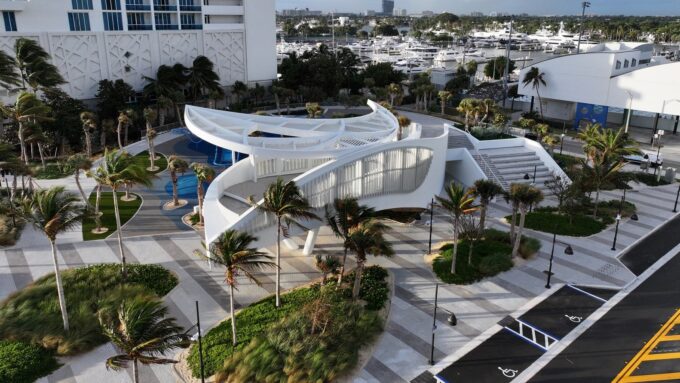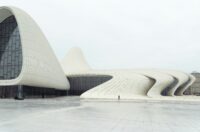- Home
- Articles
- Architectural Portfolio
- Architectral Presentation
- Inspirational Stories
- Architecture News
- Visualization
- BIM Industry
- Facade Design
- Parametric Design
- Career
- Landscape Architecture
- Construction
- Artificial Intelligence
- Sketching
- Design Softwares
- Diagrams
- Writing
- Architectural Tips
- Sustainability
- Courses
- Concept
- Technology
- History & Heritage
- Future of Architecture
- Guides & How-To
- Art & Culture
- Projects
- Interior Design
- Competitions
- Jobs
- Store
- Tools
- More
- Home
- Articles
- Architectural Portfolio
- Architectral Presentation
- Inspirational Stories
- Architecture News
- Visualization
- BIM Industry
- Facade Design
- Parametric Design
- Career
- Landscape Architecture
- Construction
- Artificial Intelligence
- Sketching
- Design Softwares
- Diagrams
- Writing
- Architectural Tips
- Sustainability
- Courses
- Concept
- Technology
- History & Heritage
- Future of Architecture
- Guides & How-To
- Art & Culture
- Projects
- Interior Design
- Competitions
- Jobs
- Store
- Tools
- More
Discover the Largest Cities in the World: Population, Size, and Global Impact
Discover the largest cities in the world and their monumental impact on culture, economy, and society. This article explores megacities by population and size, from Tokyo to São Paulo, while addressing challenges like overcrowding and sustainability. Dive into the dynamics of urbanization and unveil how these global hubs shape our interconnected world.

When we think of the largest cities in the world, our minds often picture sprawling skylines, bustling streets, and millions of people going about their daily lives. These urban giants are more than just population hubs—they’re cultural, economic, and political powerhouses that shape the global landscape. From historic metropolises to rapidly growing megacities, they offer a fascinating glimpse into humanity’s drive to innovate and connect.
As our world becomes increasingly urbanized, these massive cities highlight both opportunities and challenges. They showcase the incredible diversity of human life while grappling with issues like overcrowding, infrastructure demands, and sustainability. Exploring the largest cities isn’t just about numbers; it’s about understanding the heartbeat of our modern world. Let’s dive into what makes these cities extraordinary and why they hold such significance on the global stage.

Table of Contents
ToggleWhat Defines The Largest Cities In The World?
The term “largest cities” encompasses multiple factors beyond just population or land area. These metrics demonstrate a city’s global significance through various lenses.

Population Vs. Geographic Size
Population reflects a city’s density, vibrancy, and growth. Cities like Tokyo, with over 37 million residents, and Delhi, with 32 million (UN, 2023), showcase how urban centers can sustain enormous populations. Geography determines a city’s land area, influencing infrastructure, resources, and expansion capabilities. For instance, cities such as Chongqing cover vast areas exceeding 31,000 square miles, representing geographical dominance more than population density.
Economic And Cultural Impact
Economic contributions highlight a city’s global influence. Urban centers like New York City and Shanghai, each with GDP values exceeding $1 trillion (World Bank), serve as hubs for trade, finance, and innovation. Cultural significance adds another dimension, with cities like Paris and Mumbai impacting fashion, cinema, and art worldwide. These attributes reinforce their standing as powerhouses shaping global trends and ideas.
Top Largest Cities By Population
Cities with the highest populations showcase the dynamic nature of human settlement across continents. These metropolitan giants serve as critical hubs for economic, cultural, and societal activities.

Tokyo, Japan
Tokyo ranks as the world’s most populous urban area, with over 37 million residents in its metropolitan region. This city’s infrastructure combines traditional Japanese culture with advanced technology, resulting in highly efficient public transportation and an innovative business environment. Tokyo’s economy contributes substantially to global finance, with top sectors including manufacturing, telecommunications, and retail industries.
Delhi, India
Delhi’s metropolitan area is home to approximately 31 million people, making it the second-largest by population. Known for its historical monuments and bustling markets, Delhi serves as India’s capital and a core political and economic center. Rapid urbanization has fueled growth, creating challenges like overcrowding and pollution alongside opportunities in sectors like IT, real estate, and trade.
Shanghai, China
Shanghai, with a population of over 28 million, stands as a symbol of China’s modernization and economic prominence. As a leading global financial center, Shanghai hosts the world’s busiest container port. The city’s unique blend of historical landmarks and futuristic skyscrapers highlights its importance in driving innovation and fostering international trade.
São Paulo, Brazil
São Paulo, the largest city in the Western Hemisphere, houses nearly 22 million residents within its metropolitan area. As Brazil’s economic hub, it dominates sectors such as finance, manufacturing, and technology. São Paulo’s diverse cultural landscape, seen in its art galleries, music, and cuisine, reinforces its status as the cultural capital of Latin America.
Largest Cities By Geographic Area
Geographic size highlights a city’s sprawling nature and its ability to encompass diverse environments. These cities cover vast territories, often stretching across urban, suburban, and rural landscapes.

New York City, United States
New York City spans 302.6 square miles (783.8 square kilometers), making it one of the largest cities in the United States by geographic area. Its five boroughs—Manhattan, Brooklyn, Queens, The Bronx, and Staten Island—offer a mix of dense urban areas and open parklands. Staten Island alone accounts for a significant portion of its land area.
Beijing, China
Beijing covers approximately 6,336 square miles (16,410 square kilometers), making it one of the largest cities worldwide by land area. As China’s capital, it combines historical landmarks like the Forbidden City with vast suburban districts and rural zones, contributing to its immense size.
Moscow, Russia
Moscow’s city limits expand over 970 square miles (2,511 square kilometers). This area includes central historic locations such as the Kremlin, along with peripheral zones incorporated in administrative boundary expansions in 2012. Its size supports a balance of dense urban zones and green spaces.
Sydney, Australia
Sydney occupies 4,775 square miles (12,368 square kilometers), ranking as one of the largest metropolitan areas in Australia. Its territory includes coastal zones, suburban developments, and national parks, showcasing the city’s natural and built environmental diversity.
Challenges Of Large Urban Centers
Large urban centers face complex challenges as their populations grow and infrastructure expands. These issues demand innovative solutions to ensure these cities remain livable and sustainable.

Overpopulation And Housing
Overpopulation creates significant pressure on housing availability and affordability. Cities like Tokyo and Delhi experience high-density living situations, often resulting in overcrowded neighborhoods and informal settlements. Rapid migration into these areas exacerbates the housing crisis, pushing low-income residents into substandard living conditions. Governments and urban planners struggle to meet housing demands while maintaining quality and access.
Pollution And Infrastructure Strain
High population density and industrial activity contribute to severe pollution in large cities. Air quality in places like Beijing and Mexico City frequently exceeds health limits due to vehicle emissions and industrial pollutants. Additionally, infrastructure networks, including roadways, public transit, and utilities, face constant strain. Traffic congestion, water shortages, and aging facilities hinder daily life, requiring extensive investment in modernization and green urban solutions.
Sustainability And Future Growth
Maintaining sustainability while supporting future growth is a critical issue. Urban centers such as Shanghai and São Paulo encounter resource management challenges, including water and energy consumption. Waste management inefficiency adds to environmental degradation. Cities must adopt renewable energy, improve public transportation systems, and implement policies for responsible development to support the demands of growing populations while protecting environmental resources.
Why The Largest Cities Continue To Grow
Rapid urban expansion in the largest cities reflects evolving global dynamics. Migration, economic prospects, and modernization are primary factors driving this growth.

Migration Trends
Population influx into these cities results largely from rural-to-urban migration. People move to access improved services, education, and healthcare. For instance, cities like Lagos and Dhaka receive millions annually as individuals seek better living standards. Additionally, international migration contributes to diversity and labor market expansion, evident in global hubs such as New York and Dubai.
Economic Opportunities
Economic activities in megacities attract businesses and workers alike. With GDP contributions exceeding trillions of dollars in cities like Tokyo and Shanghai, these urban centers become magnets for industries like technology, finance, and manufacturing. Job availability, high wages, and entrepreneurial ecosystems further incentivize migration, fostering continuous growth.
Urbanization And Modernization
Infrastructure in large cities evolves alongside technological advancements. Urbanization integrates smart city solutions, high-speed transportation, and vertical housing, enhancing city efficiency. Modernization projects in cities like Delhi and São Paulo exemplify evolving skylines paired with resource optimization. This synergy of innovation and expansion sustains population growth in these urban giants.
Conclusion
Examining the largest cities in the world reveals their immense influence on global culture, economics, and societal progress. These urban centers represent a combination of diversity and innovation while reflecting the challenges of overpopulation, resource management, and sustainability. Each city, whether defined by population or geographic area, showcases a unique role in shaping our global landscape.
Urbanization’s rapid pace highlights the growing significance of these megacities as hubs of opportunity and development. Cities like Tokyo and Delhi illustrate how traditional heritage intersects with modernization, while hubs like Shanghai and São Paulo emphasize economic growth and cultural impact. Exploring these trends helps us better understand the complexities and opportunities these cities offer in an increasingly interconnected world.
- biggest cities globally
- cities with largest population
- city global impact
- city population statistics
- city rankings by population
- city size comparison
- global city economy
- global city sizes
- growing global cities
- influential world cities
- largest cities by land area
- largest cities in the world
- largest metropolitan areas
- largest urban areas
- mega cities around the world
- most populated cities
- population density in cities
- top major cities worldwide
- urban development trends
- urban population data
- urbanization and city growth
- urbanization impact on cities
- world city populations
Submit your architectural projects
Follow these steps for submission your project. Submission FormLatest Posts
3D Printed Homes: Time, Cost, and What to Expect
3D printed homes explained: realistic timelines (24–72h walls, 8–16 weeks total), true...
How a Contact Centre Boosts Trust in Your Building Business
In construction, trust is the glue that holds projects together. Clients need...
How Real Time Parcel Geolocation Is Redefining Last Mile Efficiency for Modern Businesses
Last mile delivery has become the most critical point in the customer...
How Can Small Spaces Stay Stylish and Relaxing?
In today’s fast-paced urban lifestyle, small living spaces are becoming increasingly common....












Leave a comment